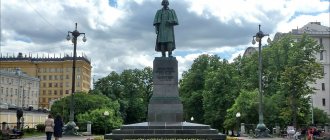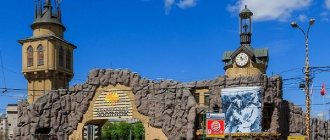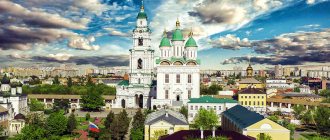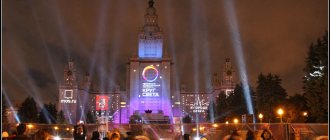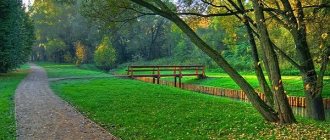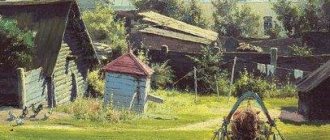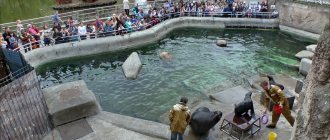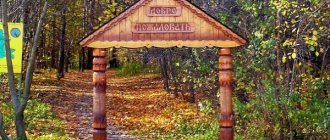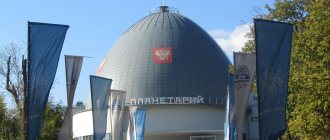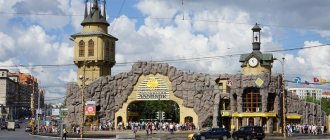The Nikulin Circus on Tsvetnoy Boulevard is one of the oldest in Russia; it was created more than 100 years ago and since then, thanks to the brilliant performances of talented artists, it has become one of the most famous and interesting circuses in the world. From the day of its creation to the present day, a homely atmosphere and comfort reign in it. Many performances are presented here as theatrical shows, and circus programs are very diverse. It is thanks to the warm atmosphere and interesting performances of the artists that both adults and children love the Nikulin Circus on Tsvetnoy Boulevard.
History of the Moscow Circus
The Moscow Circus building on Tsvetnoy Boulevard was built more than one hundred and thirty years ago, in 1880. The building on Tsvetnoy Boulevard was built for the Albert Salamonsky circus by the office of the merchant Danilov. There is a belief that Salamonsky framed the first ruble he earned in the circus and placed it in the circus box office. Initially, the circus looked completely different; on October 20, 1880, when it received its first guests, the circus had only five rows of seats, boxes, a dress circle, second seats with wooden unnumbered benches and a gallery with standing places. The circus building was rebuilt and improved many times, but always belonged to the circus and was used only for these purposes.
Photo: Salamon Circus on Tsvetnoy Boulevard, 1902.
Photo: Moscow Circus on Tsvetnoy in Soviet times
"A city to remember." 167. Nikulin Circus
March 10, 2015 Photo project “City in Memory”. 167. Nikulin Circus
The circus on Tsvetnoy Boulevard was opened on October 20, 1880 by the hereditary circus artist Albert Salamonsky. The first building was built by the office of the merchant Danilov (architect August Weber). At that time, the hall had five rows of seats, boxes, a mezzanine, second seats with wooden unnumbered benches and a standing gallery.
The main visitors to the circus were representatives of the merchant class, but commoners were not allowed entry either - the administration sold cheap tickets to the gallery. The programs included gymnasts, horse riders, and clowns. Salamonsky’s basic principle was: “What kind of circus is this if the audience laughs a little?” Salamonsky was the first to focus on children's audiences, staging performances for young spectators.
See old photos: Salamonsky Circus. 1904-1910: https://pastvu.com/p/1226
See old photos: State Circus. 1931-1935: https://pastvu.com/p/107550
In 1919, the circus was nationalized and became the first state Soviet circus. New programs with the participation of trained predators, tightrope walkers, aerialists, and magicians have appeared in the repertoire. And the clowns who in different years appeared in the arena of the circus on Tsvetnoy - Karandash, Oleg Popov, Yuri Nikulin, Mikhail Shuidin, Leonid Engibarov - became legends of the arena.
The circus did not stop its work during the Great Patriotic War; in 1942, a new stunt program “Our Three” was staged. The artists went to the front with concerts to perform for the soldiers. And many fought in the active army.
See old photos: Manege. 1947: https://pastvu.com/p/93347
See old photos: Circus. 1960: https://pastvu.com/p/88551
See old photos: Clowns Nikulin and Shuidin. 1965-1968: https://pastvu.com/p/111501
The last performance at the old arena took place on August 13, 1985; soon the circus closed for major reconstruction and appeared in an updated form in 1989. According to legend, Yuri Nikulin was against the complete demolition of the old building, which was finally demolished when the circus director was absent from the construction site and was in the hospital. However, they tried to reproduce the auditorium as it was in the old circus before reconstruction.
Look at old photos: Tsvetnoy Boulevard without the circus. 1986: https://pastvu.com/p/54575
The construction of the new building took place with the personal participation of Yuri Nikulin, who served as director from 1982 to 1997. The Circus on Tsvetnoy was his home for half a century, since the future great artist graduated from the clownery studio and began performing first with Karandash, and then with Mikhail Shuidin.
Now the circus is called “Moscow Nikulin Circus on Tsvetnoy Boulevard”. Official website: https://www.circusnikulin.ru/
The monument to Yuri Nikulin by sculptor Alexander Rukavishnikov was unveiled on September 3, 2000; it was installed on the sidewalk right in front of the entrance to the circus. Various compositional solutions for the monument were proposed, for example, with circus trapezes or with a sad Nikulin and a falling curtain. As a result, two incarnations of the great artist’s creativity came together - circus and cinema - Yuri Nikulin is dressed in his clown jacket with a tie and a boater hat, but comes out of a cinematic convertible, remembered by the audience of “Prisoner of the Caucasus”. The bronze Nikulin was made in Italy, as the stamp on the jacket reminds, and the convertible (slightly smaller than the real car) was cast in Minsk. At first they wanted to install the monument right on the roadway where cars are parked, but this idea was not supported by the State Traffic Inspectorate.
And in the park opposite the circus a whole company of clowns settled
The easiest way to get to the circus is by metro. Tsvetnoy Boulevard station opened on December 31, 1988. The end of the hall is decorated with stained glass, which from a distance resembles a flower bed, but upon closer inspection you notice images of clowns - Nikulin, Karandash, Popov, surrounded by other circus performers and trained animals.
Let's take a look at the circus with Vladimir Zhirinovsky
Vladimir Medinsky, Minister of Culture of the Russian Federation: “We know that our Russian, Soviet, Russian circus is the best circus in the world!”
See old photos: Circus interiors. 1978: https://pastvu.com/p/99193
While spectators in the foyer are taking souvenir photos with tame animals, final preparations for the performance are taking place behind the scenes.
“And the hall is filled again... and miracles happen in the arena”
Among the guests of honor is Tatyana Nikolaevna Nikulina...
...and Princess Stephanie of Monaco, known for her love of the circus.
Maxim Yurievich Nikulin - general director and artistic director of the Moscow Nikulin Circus on Tsvetnoy Boulevard
This story uses photographs of circus performances from 2014-2015
Photos: Evgeny Chesnokov
The next story features the Mosfilm film studio...
Category: Personal blogs. Tags: Moscow, entertainment, city for memory, Nikulin's circus.
Other publications
Evgeny Chesnokov 02/09/2021 at 00:05
"A city to remember." 639. Stoleshnikov Lane
The origin of the name Stoleshnikov Lane is related to the weaving craft - the word “stoleshnik” in the old days meant “tablecloth”.
Evgeny Chesnokov 01/22/2021 at 00:16
"A city to remember." 638. Povarskaya street - Kekushev, Vesnin, Tolstoy, Mikhalkov
The final stretch of Povarskaya Street presents architectural delights and urban stories for every taste.
Evgeny Chesnokov 01/21/2021 at 18:00
"A city to remember." 637. Povarskaya street - Bunin, Gilardi, Gorky, Gnesiny
The walk along Povarskaya Street continues.
Every house, every estate here is associated with the names of outstanding cultural figures. Evgeny Chesnokov 01/19/2021 at 02:04
"A city to remember." 636. Povarskaya street - Vorovsky, Themis, Kalmeer
In ancient times, the Volotsk trade road, leading from Moscow to Veliky Novgorod, ran along the route of what is now Povarskaya Street.
Evgeny Chesnokov 01/13/2021 at 01:28
"A city to remember." 635. Moscow cinemas. "Ural" - "Yantar"
The audit showed that in recent years, Soviet-built cinemas have suffered heavy losses, but those that still exist continue to fight for viewers.
Evgeny Chesnokov 01/11/2021 at 23:30
"A city to remember." 634. Moscow cinemas. "Sayan" - "Ulaanbaatar"
At the Sputnik cinema in Lefortovo, viewers can not only watch new films, but also visit an exhibition of rare film projection equipment.
Evgeny Chesnokov 01/10/2021 at 22:48
"A city to remember." 633. Moscow cinemas. "Polar" - "Saturn"
The most famous Moscow cinema was called "Russia", it opened in 1961 and retained the original sign on the facade.
The hall is currently rented by the Musical Theatre. Evgeny Chesnokov 01/09/2021 at 23:19
"A city to remember." 632. Moscow cinemas. "Eagle" - "Flight"
As the guidebook “Around Moscow” wrote in 1954, “in the fifth five-year plan it is planned to build 27 new well-equipped cinemas with 12,500 seats in Moscow.”
Evgeny Chesnokov 01/08/2021 at 12:33
"A city to remember." 631. Moscow cinemas. "Ladoga" - "Orbit"
The maintenance and repair of cinemas required serious expenses and cinema administrations had no choice but to rent out the premises.
Evgeny Chesnokov 01/07/2021 at 17:50
"A city to remember." 630. Moscow cinemas. "Zvezdny" - "Kuntsevo"
The third part of the review of Soviet cinemas included a unique technical attraction - the Circular Cinema Panorama, which opened on June 16, 1959 at VDNKh.
Evgeniy Chesnokov 01/06/2021 at 22:30
"A city to remember." 629. Moscow cinemas. "Volga" - "Zvezda"
The Moskino chain operates successfully in Soviet-built buildings, saving 13 large and small cinemas from closure.
Evgeniy Chesnokov 01/05/2021 at 00:53
"A city to remember." 628. Moscow cinemas. "Avangard" - "Vladivostok"
“A City in Memory” made inquiries about 138 cinemas that operated in Moscow in the 1970s and 1980s.
Evgeny Chesnokov 12/23/2020 at 02:08
"A city to remember." 627. Pebbles and “Moscow City”
Kamushki is the name given to the Presnensky residential microdistrict, located almost on the very bank of the Moscow River on the site of the old Dorogomilovsky quarries.
11/23/2020 at 11:28 am
Life in the red zone
Everyday life of the Covid hospital at VDNKh.
Evgeny Chesnokov 09.11.2020 at 22:51
"A city to remember." 625. Krasnokazarmennaya street
Another Lefortovo story is dedicated not to the times of Peter the Great or Catherine, but mainly to Soviet science and students.
Evgeniy Chesnokov 08.11.2020 at 13:34
"A city to remember." 624. Rogozhskaya Sloboda
The Rogozhskaya Sloboda owes its origins to Empress Catherine II, who allocated land to the Old Believers in gratitude for their contribution to the fight against the plague epidemic.
Famous Circus Artists
The circus on Tsvetnoy Boulevard is famous for its famous artists. The circus featured Anatoly and Vladimir Durov, Vitaly Lazarenko, Vilmyams Truzzi (horse performance), jumpers Sosin, jockeys Vasily Sobolevsky and Herbert Cook, dancer Marta Sur, acrobats Okeanos, tightrope walkers the Koch sisters, the “cunning” Kio and many others.
A special place in the life of the circus was occupied by its artistic director Izyaslav Nemchinsky, creating Filatov’s “Bear Circus”.
Photo: “bear circus” by Valentin Filatova
Over its long history, the Old Moscow Circus on Tsvetnoy Boulevard has tried to constantly look for and open new interesting acts, to surprise the viewer with the capabilities of the human body and acting skills.
In 1919, by decree of Vladimir Lenin, the circus was nationalized and the former Salamonsky circus became the first state circus, forever securing this status.
Story
The representative of the circus dynasty, Albert Salamonsky, became famous as a performer of somersaults on a bareback horse. The rider, equestrian acrobat and trainer decided to create his own “entertainment establishment.” The money for the construction of the building was given on credit by the merchant Danilov, whom Salamonsky convinced of the commercial success of the enterprise.
The room included 5 rows of stalls with numbered seats, boxes, mezzanine, as well as wooden benches without numbering and a gallery. Jugglers, illusionists, gymnasts, strongmen, tightrope walkers and trainers with their pets entered the arena. The acrobats demonstrated spectacular tricks at heights without safety nets, forcing the audience to involuntarily hold their breath and watch the performance with bated breath.
“Salamonsky’s Circus” immediately gained popularity. The bulk of the city's public were people of the merchant class, artisans and office workers. In those days, throughout the world, the circus was considered entertainment exclusively for adults. Albert Salamonsky was the first to decide to organize performances for children in the morning, and submitted a petition to the city authorities to hold “matinee performances,” promising that “the programs will be adapted to children’s understanding.” The petition was granted, and since then circus shows have gradually begun to transform, having now become a celebration of childhood.
The “crown” numbers of the circus on Tsvetnoy Boulevard were the performances of the equestrian troupe. Children's performances were given on Sundays, and Christmas trees with gifts were held during the Christmas holidays. The building was rebuilt several times to increase the number of spectator seats, but the diameter of the arena remained unchanged: 13 m. This standard, adopted back in the 19th century, is still observed in all world arenas, since it is optimal for galloping horses and acrobatic sketches of riders.
During the First World War and the subsequent revolution, the circus fell into decline. The artists starved and were forced to perform in public squares for alms. In 1919, the Soviet government nationalized the Salamonsky Circus, since then it began to be called the “First State Circus” or the State Circus. Lenin stated that “of all the arts, cinema and circus are the most important for us,” People’s Commissar of Education Lunacharsky considered circus art “an academy of physical beauty and wit.” Visiting the circus has become one of the forms of cultural leisure of the masses.
During the Great Patriotic War, many artists went to the front line, and the troupes that remained behind performed in hospitals and on the front line. In 1945, former front-line soldier Yuri Nikulin entered the clownery studio. After studying, he worked under the guidance of the famous Karandash, and then began performing independently and in a duet with Mikhail Shuidin, creating genre skits, hilarious reprises, sketches and pantomimes. In 1984, Yuri Vladimirovich Nikulin headed the circus as director. The premises, which had stood for 100 years, became very dilapidated, so they decided not to reconstruct it, but to demolish it completely and build a new one. The farewell performance took place on August 13, 1985, and 2 years later the new building opened its doors to spectators with the program “Hello, Old Circus!”
On the 75th anniversary of the great clown, the circus was named after Yuri Nikulin, and after the artist’s death, his son Maxim became the general director.
Sculptor Rukavishnikov created the monument, combining cinema and circus in a bronze composition, which made Yuri Nikulin a favorite of the public. The artist in a clown outfit is depicted standing next to a convertible, famous from the scene of the chase after Shurik in the film “Prisoner of the Caucasus.”
© Menfice M
Clowns of the Moscow Circus on Tsvetnoy
It is known that clowns are an integral part of any reputable circus. So the Circus on Tsvetnoy became home to world famous clowns:
- It was here, in the circus on Tsvetnoy, that the unfading glory of the clown Karandash began.
Photo: Clown Pencil at the Moscow Circus
- The circus arena has repeatedly presented the audience with stunning performances by the “sunny clown” Oleg Popov.
Photo: Clown Oleg Popov
- The most famous clowns of the Moscow Circus were Yuri Nikulin and Mikhail Shuidin. Many spectators visited the circus solely for them, without being interested in the rest of the performance program.
Photo: clowns Yuri Nikulin and Mikhail Shuidin
Even during the war years 1941-1945. the circus did not stop working. The theme of the performances took on a military form.
In 1983, the circus was taken over by the People's Artist of the USSR, the legendary clown and artist Yuri Nikulin. On August 13, 1985, a grand final performance took place in the old circus building, after which the old knowledge was broken and construction began on a new modern circus, which opened on September 29, 1989 with the program “Hello, Old Circus!” (directors V. Krymko, N. Makovskaya).
In July 1996, Honored Artist Valentin Gneushev was appointed chief director of the circus. In December 1996, after the 75th anniversary of Yuri Nikulin, the circus was given the name “Moscow Nikulin Circus on Tsvetnoy Boulevard”. In August 1997, after the death of Yu.V. Nikulin, his son Maxim Nikulin was elected General Director.
Impressive Features
- The main life principle of the actor and entrepreneur Salamonsky: “Can it be called a circus if the audience laughs little?”
- The arena dome reaches a height of 22 meters, it is one of the largest domes in Russia.
- The monument to the artist Yuri Nikulin opposite the circus was erected on September 3, 2000. This is the creation of the sculptor Rukavishnikov. The famous clown is shown next to his Adler Trumpf Junior car, which was immortalized in the memory of people by the Soviet movie “Prisoner of the Caucasus.” By the way, this car was Nikulin’s personal property.
- In 1982, the circus was filming a New Year’s concert-performance called “Attraction.” This festive program included the premiere of Alla Borisovna Pugacheva’s then new song, which is still popular today - “A Million Scarlet Roses”. The singer simultaneously sang and twirled under the dome on a circus trapeze. The concert number and the song itself became the brightest performance of the decade.
- Nikulin's Circus is warmly “friends” with the capital show “Field of Miracles”. So, in 1992, the 100th anniversary game of the program was held in this building on Tsvetnoy Boulevard. And 8 years later, in November 2010, the circus held another anniversary performance - a concert in honor of the 20th anniversary of the folk program.
Moscow Circus of Yuri Nikulin today
Today, the Yuri Nikulin Circus on Tsvetnoy has all the necessary modern equipment. Modern renovation, dressing rooms, comfortable enclosures for animals. We tried to reproduce the modern and beautiful spectator foyer and comfortable auditorium, reproduced according to the sketches of the first with only minor changes, as it was before the reconstruction. Today, the Old Moscow Circus on Tsvetnoy Boulevard is still ready to welcome more than 2,000 people.
Photo: Circus Nikulin Hall
Nikulin
Yuri Nikulin became the head of this Moscow institution in 1983. He held his final (farewell) grand show in the old historical building in August 1985. And then the old dilapidated building was razed to the ground. But in 1987, the first brick was laid and a capsule with a letter to descendants was walled up under the new building.
The new building was opened by a circus show in 1989.
In 1996, in honor of Nikulin’s 75th birthday, the circus was given his name. When Nikulin died in 1997, the artist’s talented son Maxim began to manage the institution.
The most interesting performances of the Moscow Circus on Tsvetnoy
Elephant show
One of the most interesting programs of the circus, rightfully, is the Indian elephants. Great guests from Tver have arrived. The experience of the artists is enviable; they have dozens of perfectly practiced tricks and many hundreds of interesting programs.
Elephants were highly anticipated in Moscow. The guests performed an honorable mission - they performed at a grand celebration dedicated to the 95th anniversary of the Russian State Circus. The most difficult and impressive trick performed by elephants is the Girl on the Ball. We learned and rehearsed it for five whole years. The five-ton animal climbs onto the ball with all four legs. The impressions are indescribable. These elephants are trained by representatives of the famous Kornilov circus dynasty. Circus performers have been working and performing with animals since childhood.
Photo: Elephant on a ball at the Moscow Circus
Watch this interesting video of elephants preparing for a performance in the circus:
Video: elephants at the Moscow Circus on Tsvetnoy
Clowns Yuri Nikulin and Mikhail Shuidin
The performances of clowns Yuri Nikulin and Mikhail Shuidin in the circus do not need advertising, we simply invite you to enjoy a selection of videos.
Video: clowns Yuri Nikulin and Mikhail Shuidin
Tickets to the Moscow Circus on Tsvetnoy Boulevard, price
The cost of tickets to the circus starts from 500 rubles and ends at 3500 rubles. A good ticket can be bought for 2000 rubles. If the child is small and can sit on his lap, then you can save money and go with one ticket. This rate is valid for children under 6 years old.
Despite the fact that the circus arena is round, of course, it is better to take tickets opposite the artists’ exit, so nothing will go unnoticed. The rows are chosen for everyone, if you like to be a participant in the events - to have water splashed at you, dragged onto the stage, sat on your knees - you can take seats closer (rows 1-5), if you want a quiet viewing - the center seats will be on rows 7-10 ideal, they cost around 2000 rubles, sector 1, left or right side.
Photo: layout of the hall of the Moscow Circus on Tsvetnoy and ticket prices
Mikrusha hopes that you were interested in reading about the Moscow Circus on Tsvetnoy Boulevard. We will be interested in reading your reviews, looking at photos from trips to the circus and discussing the latest programs.
How it all began
Albert Salamonsky, the father of the Moscow Circus, was from Italy and was the world's most famous hereditary circus performer.
He was also a successful entrepreneur, as he managed to found several arenas, leading them as a manager. Among them are not only the Nikulinsky Circus, but also the famous Riga Circus. By the way, before the opening of the Circus of Salamon, circus acts could only be performed by the age limit of 18+. After all, such shows were considered to be in demand exclusively by adults. It was with the circus on the boulevard that the chronicle of creating entertainment programs for the youngest enthusiastic spectators began; the privilege of the circus arena was also the holding of New Year trees with delicious gifts. The building with the arena was erected in 1880. And on October 20, 1980, the circus already received its visitors. An interesting story is that he placed the first ruble that the sold circus ticket brought him in a frame and placed it on the wall behind the cashier.
On opening day, you could choose a seat in one of 5 rows of soft seats, on the box or on the dress circle. Tickets for second places with regular benches without any numbering or for standing spectators were more affordable. Of course, the building has gone through many reconstructions and rebuildings, but all these years it has always served the circus.
